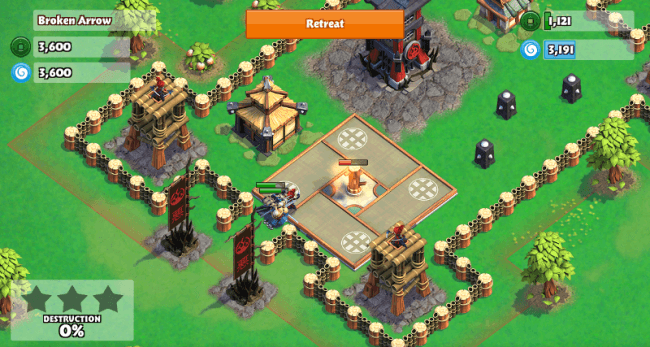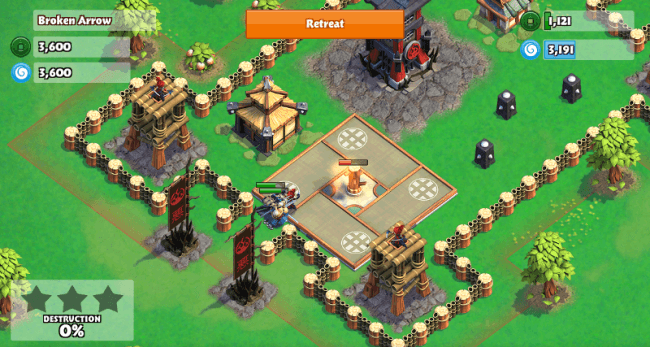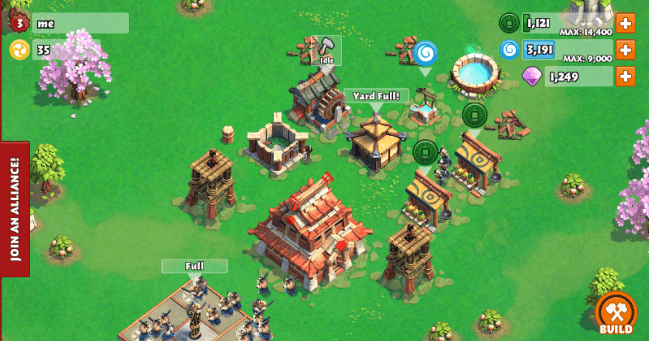- Wondering how to get Monopoly GO! free rolls? Well, you’ve come to the right place. In this guide, we provide you with a bunch of tips and tricks to get some free rolls for the hit new mobile game. We’ll …
Best Roblox Horror Games to Play Right Now – Updated Weekly
By Adele Wilson
Our Best Roblox Horror Games guide features the scariest and most creative experiences to play right now on the platform!The BEST Roblox Games of The Week – Games You Need To Play!
By Sho Roberts
Our feature shares our pick for the Best Roblox Games of the week! With our feature, we guarantee you'll find something new to play!Type Soul Clan Rarity Guide – All Legendary And Common Clans Listed!
By Nathan Ball
Wondering what your odds of rolling a particular Clan are? Wonder no more, with my handy Type Soul Clan Rarity guide.
Samurai Siege Review
Samurai Siege enters a crowded field of mobile combat simulation games whose notable members include Clash of Clans and Greed for Glory. The basic concepts of building your village, strengthening defenses, improving structures, training troops, and sending them out to conquer other villages remains the same. Now, however, instead of dragons or medieval warriors, it’s you and a bunch of samurai warriors! Not too shabby, if you ask us.
Samurai Siege takes place in two main modes: village management and combat. The former allows you to place and upgrade new structures, such as marketplaces that generate coins or arrow towers to provide rudimentary defense. Here you also unlock troops and train them for battle, storing them in your training fields until it’s time to head out and do some conquering. Combat pits you against well-defended enemy villages. Tap the screen to deploy troops, then sit back and watch the action. In the end, it’s all about gaining more resources so you can beef up your village to become the ultimate samurai warrior town this side of Kyoto.
Currencies are threefold in Samurai Siege. Coins, represented by green circles, are generated from markets, stored in vaults, and are used to build and upgraded defenses. Critically important is upgrading your castle so you can unlock more units and buildings, so never pass up an opportunity to rake in cash. Essence is earned from wells, held in storage tanks, and is used to build and upgrade certain structures. Diamonds are the basic “hurry-up” currency and can be spent to instantly build things, train troops, etc. All of these can be purchased via microtransactions, but you also earn coins and essence by sacking villages. As if you needed another excuse to go out and conquer things.

A clashing of samurai clans
Samurai Siege enters a crowded field of mobile combat simulation games whose notable members include Clash of Clans and Greed for Glory. The basic concepts of building your village, strengthening defenses, improving structures, training troops, and sending them out to conquer other villages remains the same. Now, however, instead of dragons or medieval warriors, it’s you and a bunch of samurai warriors! Not too shabby, if you ask us.
Samurai Siege takes place in two main modes: village management and combat. The former allows you to place and upgrade new structures, such as marketplaces that generate coins or arrow towers to provide rudimentary defense. Here you also unlock troops and train them for battle, storing them in your training fields until it’s time to head out and do some conquering. Combat pits you against well-defended enemy villages. Tap the screen to deploy troops, then sit back and watch the action. In the end, it’s all about gaining more resources so you can beef up your village to become the ultimate samurai warrior town this side of Kyoto.
Currencies are threefold in Samurai Siege. Coins, represented by green circles, are generated from markets, stored in vaults, and are used to build and upgraded defenses. Critically important is upgrading your castle so you can unlock more units and buildings, so never pass up an opportunity to rake in cash. Essence is earned from wells, held in storage tanks, and is used to build and upgrade certain structures. Diamonds are the basic “hurry-up” currency and can be spent to instantly build things, train troops, etc. All of these can be purchased via microtransactions, but you also earn coins and essence by sacking villages. As if you needed another excuse to go out and conquer things.
Multiplayer features add some interesting combat variations to Samurai Siege. You can join alliances to strengthen your position, or take on random players’ villages in quick battles. These net you essence and coins, just like story battles, but have the added bonus of being against real, player-made towns.
The chief drawbacks to Samurai Siege (apart from the inherent sameness present in the genre) are its technical flaws. For starters, the game seems to have been designed for tablets in mind. Many of the interface icons are small and require precision to tap and activate. The text is also a bit on the small side. At the time of this writing, the in-app currency values weren’t localized, and attempting to make a purchase failed. That’s an issue that will likely be ironed out as soon as the development team can, as pushing IAPs is sort of the point of these games.
Apart from that, we found notifications that couldn’t be turned off and experienced a few crashes that forced the game to restart. No progress was lost, but if the crash had occurred during a battle, that might not have been the case. Either way, it didn’t instill confidence in sinking a lot of time (or money) into the game.
Samurai Siege has a lot of competition, and its creativity in terms of setting and unit/building design definitely gives it a bit of an edge. The technical flaws cut that edge down in size, however, impairing your ability to sit down and become absorbed by the game. It’s not unplayable by any means, but some errors are just too frustrating to overlook.

The good

The bad
More articles...
Monopoly GO! Free Rolls – Links For Free Dice
By Glen Fox
Wondering how to get Monopoly GO! free rolls? Well, you’ve come to the right place. In this guide, we provide you with a bunch of tips and tricks to get some free rolls for the hit new mobile game. We’ll …Best Roblox Horror Games to Play Right Now – Updated Weekly
By Adele Wilson
Our Best Roblox Horror Games guide features the scariest and most creative experiences to play right now on the platform!The BEST Roblox Games of The Week – Games You Need To Play!
By Sho Roberts
Our feature shares our pick for the Best Roblox Games of the week! With our feature, we guarantee you'll find something new to play!Type Soul Clan Rarity Guide – All Legendary And Common Clans Listed!
By Nathan Ball
Wondering what your odds of rolling a particular Clan are? Wonder no more, with my handy Type Soul Clan Rarity guide.








 “
“ “
“ “
“